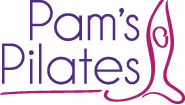The Psoas muscle (pronounced so-as) is the deepest muscle of the human body affecting our structural balance, muscular integrity, flexibility, strength, range of motion, joint mobility and organ functioning.
It is the only ‘muscle’ to connect the spine to the legs. It is responsible for holding us upright and allows us to lift our legs in order to walk. A healthily functioning psoas stabilises the spine and provides support through the trunk, forming a shelf for the vital organs of the abdominal core.
The Psoas muscle is the deepest muscle of the human body affecting our structural balance, muscular integrity, flexibility, strength, range of motion, joint mobility, and organ functioning.
By learning to relax the psoas you can literally energize your deepest core by connecting with the powerful energy of the earth. The psoas is far more than a core stabilizing muscle; it is an organ of perception composed of biointelligent tissue and ‘literally embodies our deepest urge for survival and more profoundly, our elemental desire to flourish.’
Our fast paced modern lifestyle (which runs on the adrenaline of our sympathetic nervous system) chronically triggers and tightens the psoas – making it literally ready to run or fight. The psoas helps you to spring into action – or curl you up into a protective ball.
If we constantly contract the psoas due to stress or tension, the muscle eventually begins to shorten leading to a host of painful conditions including low back pain, sacroilliac pain, sciatica, disc problems, spondylolysis, scoliosis, hip degeneration, knee pain, menstruation pain, infertility and digestive problems.
A tight psoas not only creates structural problems, it constricts the organs, puts pressure on nerves, interferes with the movement of fluids and impairs diaphragmatic breathing.
A relaxed psoas is the mark of play and creative expression. Instead of the contracted psoas, ready to run or fight, the relaxed and released psoas is ready instead to lengthen and open,to dance. In Pilates, the thighs cant fully rotate outward unless the psoas releases. A released psoas allows the front of the thighs to lengthen and the leg to move independently from the pelvis, enhancing and deepening the lift of the entire torso and heart.
March 23, 2011/ Danielle Prohom Olson

